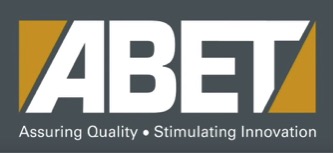Welcome to Engineering Standards!
Set high standards and few limitations for yourself. Anthony J. D'Angelo
As with any profession, engineering work is supported by a wide range of standards that, while largely voluntary, guide and influence the design of products and guide their use and interface with other products. Engineering standards are often developed by voluntary consensus with professional trade organizations. The American National Standards Institute (ANSI) is the clearinghouse for all standards developed in the United States by these and other organizations while the International Organizations for Standardization (ISO) are the global counterpart of ANSI. Standards, while they may often seem cumbersome, tedious, and overly detailed, ensure that products can fit together, communicate with one another, operate safely, and overall, work together for more efficient and effective bodies of technology.
Believe it or not, standards are a part of the undergraduate's world also. Click on the image below to watch a short video on how the accreditation board for engineering views standards.
As with any profession, engineering work is supported by a wide range of standards that, while largely voluntary, guide and influence the design of products and guide their use and interface with other products. Engineering standards are often developed by voluntary consensus with professional trade organizations. The American National Standards Institute (ANSI) is the clearinghouse for all standards developed in the United States by these and other organizations while the International Organizations for Standardization (ISO) are the global counterpart of ANSI. Standards, while they may often seem cumbersome, tedious, and overly detailed, ensure that products can fit together, communicate with one another, operate safely, and overall, work together for more efficient and effective bodies of technology.
Believe it or not, standards are a part of the undergraduate's world also. Click on the image below to watch a short video on how the accreditation board for engineering views standards.
Even as an engineering student you can feel the effects of standards through such organizations as ABET (Accreditation Board for Engineering and Technology) which ensures that all accredited engineering programs in the U.S. graduate students of similar skills and capabilities and in turn, adds value and appeal to engineering degrees for potential employers.
The importance of standards cannot be understated. Standards are the reason that red lights indicate Emergency Stop, Stops or Off and why green lights indicate Go or On. Standards are the reason we can plug our appliances or devices in at home, work, or school. The lack of standards is the reason why we can't just plug in our devices in Europe or Japan. Although these standards may seem limiting or burdensome, in the long run, they improve the likelihood of success in the design of all products.
This Real World Considerations Suite is divided into individual modules, including an overview module, and emphasizes different aspects of engineering design in the real world. This module is the first of two in considering economics and focuses on what must be considered and accounted for in engineering design – economic constraints. You can continue to explore more about economic constraints by selecting a link below or alternatively, you can select any of the other modules by returning to the Real World Considerations page.
Seek and Comply with Standards for maximum product safety and reach!
Know more:
Engineering Standards
Presentation (.pdf)
Audio Recording (YouTube)
Assignment in MS Word (.docx) or Portable Document Format (.pdf)
Quiz in MS Word (.docx) or Portable Document Format (.pdf)
Explore More:
Engineering Standards
Environmental Constraints in Engineering Design
Environmental Consequences of Engineering Design
Social Constraints in Engineering Design
Social Consequences of Engineering Design
Economic Constraints in Engineering Design
Economic Consequences of Engineering Design
Acknowledgements:
This work was funded in part by the National Science Foundation (DUE-1245464). Any opinions, findings, and conclusions or recommendations expressed in this material are those of the author(s) and do not necessarily reflect the views of the National Science Foundation.
This work was funded in part by the National Science Foundation (DUE-1245464). Any opinions, findings, and conclusions or recommendations expressed in this material are those of the author(s) and do not necessarily reflect the views of the National Science Foundation.


